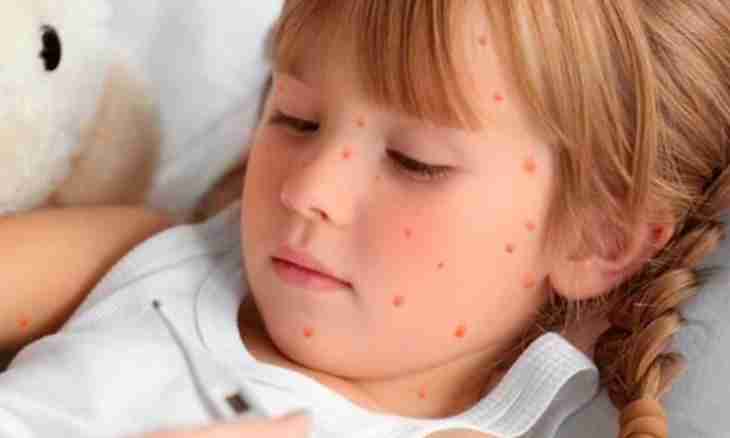Chicken pox - an infectious disease which provokes one of types of a virus of herpes. How to distinguish chickenpox and than to treat it?
Instruction
1. Chicken pox usually begins sharply, with temperature increase of a body to 38 - 39 degrees which is followed by appearance of rash in the form of the bubbles bordered with a red or pinkish spot. Such rash can be located everywhere, affecting extremities, a back, a stomach, a face and also a hairy part of the head and mucous membranes. Chicken pox, or as it is accepted to speak, chickenpox, can pass in three forms: easy, average or heavy. Than the patient is younger, especially the disease is easily transferred. At kids up to three years the rash can be presented by only several bubbles and not be followed even by temperature increase. Because of it it is easy to pass chickenpox, having written off appearance of rash for a heat or having taken for allergic reaction. Chicken pox of average weight passes more difficult, with temperature increase of a body, with the plentiful itching rashes, headaches. Chicken pox in a severe form proceeds at adults more often. It is characterized by longer period of rashes which are very plentiful, are followed by very high temperature, fever. The severe form of chicken pox can have serious complications in the form of damage of internals, meningitis and so on. Chickenpox is very dangerous to pregnant women as it can influence development of the child. The doctor observed pregnancy surely has to tell about risk degree.
2. At children, as a rule, chickenpox passes benign and has no complications. If process of recovery is dragged out or followed by headaches, most likely hospital treatment in an infectious hospital department is required. The virus causing chickenpox, the Varicella Zoster virus is transmitted from the sick person in the airborne or contact way. The incubation period can be from one to three weeks, and extends from the sick child already three days before emergence of the first symptoms of a disease and during this period the child is the most infectious. Chicken pox in common form does not demand special treatment. It is necessary to cauterize rash solution diamond green (""brilliant green"") or any other alcohol-containing medicine, for example, calendula tincture only from time to time. It becomes to prevent hit of an infection in skin on the place of the burst bubble and formation of an ugly scar. If the child is disturbed by a severe itch, it is necessary, previously having consulted with the pediatrician, to give any antihistamine. In case of temperature increase higher than 38 degrees it is necessary to report about it to the pediatrician and to give the appointed febrifugal.
3. As a rule, chickenpox passes without special treatment in 7 - 10 days from the moment of emergence of the first bubble. On the place of not infected bubbles there is no trace left. If in the place of the burst bubbles there was suppuration, there can be a scar. To bathe or not to bathe the child sick with chickenpox? To this day pediatricians conduct disputes on it. Some recommend not to bathe the child as it can provoke appearance of new rash, others, on the contrary, advise to bathe the child to prevent development of secondary infection of integuments. Vaccine against chickenpox. Children since one-year-old age and to adults who had no chickenpox can take root, at will, from the Varicella Zoster virus. Period of validity of vaccine - about 10 years then vaccination needs to be repeated. It should be noted that vaccination does not guarantee absolute protection against a disease of chickenpox.

